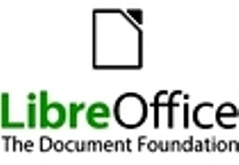A year after forking the OpenOffice.org project to create a community-driven office productivity suite, The Document Foundation estimated that LibreOffice has 25 million users worldwide.
The Document Foundation and the LibreOffice marked their first anniversary on 28 September.
OpenOffice.org developers originally created LibreOffice to break the software away from Oracle’s control after it appeared that the database giant was not interested in working with the open-source community. The Document Foundation was founded to make the project truly vendor-neutral. Google was among the first companies to support the new project.
Developer attraction
Oracle responded to the split by forcing TDF members who were also participating on the OpenOffice community council to step down. Despite not having Oracle support, LibreOffice has thrived in the past year, with more than 25,000 code “commits” submitted by 330 contributors. Code commits reflect major changes to code, the addition of new features and bug fixes.
 “The Document Foundation has attracted more developers with commits in the first year than the OpenOffice.org project in the first decade,” said Norbert Thiebaud, a member of TDF Engineering Steering Committee.
“The Document Foundation has attracted more developers with commits in the first year than the OpenOffice.org project in the first decade,” said Norbert Thiebaud, a member of TDF Engineering Steering Committee.
LibreOffice has been downloaded about 7.5 million times since the first stable launch in January, TDF estimated. However, another 10 million users have installed the code via USB stick or CD burned by one of these downloads. Most Linux users get LibreOffice directly from their distribution’s software repositories.
As expected, a bulk of LibreOffice’s popularity comes from Linux users, primarily because major Linux distributions favor LibreOffice over OpenOffice.org. Approximately 60 percent of the installed base use Linux, 36 percent use Windows and the remaining 4 percent use Mac OS X, according to statistics collected by TDF.
The developer community is “well balanced” between company-sponsored contributors and independent volunteers, Italo Vignoli, a member of the TDF Steering Committee, wrote on The Document Foundation blog. SuSE and Red Hat are major contributors to the project, and organisations such as Canonical have dedicated LibreOffice developers on staff.
OpenOffice.org moves to Apache
As for OpenOffice, Oracle modified its plans in April and cancelled its commercial version of the productivity suite. Oracle said OpenOffice.org would move to a purely community-based open-source project. In June, it abandoned the project entirely, donating the entire codebase to the Apache Software Foundation. TDF had hoped Oracle would donate the code to the group, but Oracle said Apache provided a “mature, open and well-established infrastructure”. IBM is still working on OpenOffice code, but progress has been slow, as the latest available version is OpenOffice 3.3, released in January.
While the LibreOffice suite is nowhere near ready to take on Microsoft Office, TDF is planning to expand the project’s range and sophistication. TDF will be making a push to attract enterprises and Windows users over the next year, according to TDF.
When the latest release of LibreOffice, version 3.4.2, was released on 1 August, TDF said it was the first version that was ready for corporate deployment. Prior versions had been intended for “early adopters and power users,” Vignoli had said at the time.
TDF expects LibreOffice to have 200 million users by 2020. Future plans for TDF and the software suite will be revealed at the first LibreOffice conference in Paris on 12 October.




